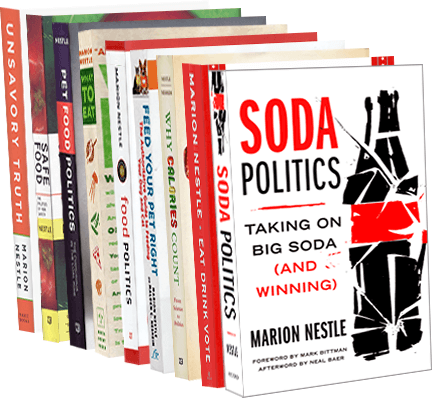New attempt to get the FDA to fix its industry-friendly GRAS rules
Several food safety advocacy groups are suing the FDA to take responsibility for ensuring the safety of food additives.
Doesn’t the FDA already do this? No, it does not.
As the press release puts it [with my emphasis in bold],
Federal law requires FDA to ensure that substances used in food are safe, taking into account consumers’ entire diet and all exposure to the chemical and similar chemicals. But any substance designated as “generally recognized as safe” (GRAS) by FDA or by a food or chemical company can bypass the rigorous pre-market review and approval process applied to food additives. The GRAS exemption was initially created to cover ingredients that are widely known to be safe, such as vegetable oil, but has been applied in recent practice to novel chemicals and is now a loophole that has swallowed the law.
Under pressure from industry, in 1997 and again in 2016, FDA adopted a practice that allows food and chemical manufacturers to decide for themselves, without notice to FDA or the public, that food chemicals are safe—even if the chemicals are new, not widely studied, and not widely accepted as safe .
I commented on the FDA’s 2016 ruling at the time. Former FDA Commissioner David Kessler referred to this GRAS policy as a “joke,” noting that it allows the industry to decide whether its own products are safe.
I am particularly interested in this suit because I wrote a commentary on an article about conflicts of interest in GRAS determinations in 2013. As I said about the article’s findings,
At present, manufacturers of all food additives are permitted to decide on their own whether a substance is GRAS for human consumption, unless the additive affects food color. Companies also can choose whether to even notify the agency about a new additive. In practice, many manufacturers do inform the FDA. But…about a thousand additives are believed to be in the food supply without the FDA’s knowledge…the lack of independent review in GRAS determinations raises serious questions about the public health implications of unregulated additives in the food supply, particularly the additives that the FDA does not even know about.
Let’s hope the lawsuit gets this situation fixed.


Americans these days don’t want artificial and unsustainably produced ingredients in the food they buy and eat. For the makers of highly processed foods – ultraprocessed in today’s terminology – there isn’t a lot that they can do to make the products appear fresh and natural.
But Campbell’s is certainly trying. A few months after announcing that it will phase out genetically modified organisms (GMOs), the iconic soup company said on Friday that it will remove Bisphenol-A (BPA) from its cans by next year.
BPA, you will recall, is a chemical typically used in polycarbonate plastic containers and in the epoxy linings of food cans. It’s also an endocrine disrupter, which means it can interfere with the work our hormones are doing. Some research finds BPA to have effects on childhood development and reproduction.
Although the FDA doesn’t believe evidence of potential harm is sufficient to ban BPA from the food supply, the agency discourages use of BPA-polycarbonate or epoxy resins in baby bottles, sippy cups or packaging for infant formulas. For the past year or so, other retailers have been working hard to phase out BPA and to reassure customers that their cans and packages are safe.
All of these companies sell highly processed foods in an era when the public is demanding – and voting with their dollars – for fresh, natural, organic, locally grown and sustainably produced ingredients.
They can’t provide those things, but they can tout the bad, or unpopular, things that aren’t part of their product, the “no’s”: no unnatural additives, no artificial colors or flavors, no high fructose corn syrup, no trans fat, no gluten and, yes, no GMOs or BPA.
Let me add something about companies labeling their products GMO-free. In my view, the food biotechnology industry created this market – and greatly promoted the market for organics, which do not allow GMOs – by refusing to label which of its products contain GMOs and getting the FDA to go along with that decision. Whether or not GMOs are harmful, transparency in food marketing is hugely important to increasing segments of the public. People don’t trust the food industry to act in the public interest; transparency increases trust.
Vermont voted last year to mandate GMO labeling in the state – the US Senate rejected a bill in mid-March attempting to undermine it – and food conglomerates such as Campbell’s, General Mills, ConAgra, Kellogg and Mars have committed to labeling their products as containing GMO.
In addition to removing BPA from packaging and GMO from products, at least 11 other companies have announced recently that say they are phasing out as many artificial additives as possible, as quickly as they can.
Taco Bell, for example, will get rid of Yellow Dye #6, high fructose corn syrup, palm oil and artificial preservatives, and replace them with “natural” ingredients. Huge food companies such as Kraft, Nestlé (no relation) and General Mills are heading in the same direction.
All this may well benefit consumers to an extent. It also makes perfect sense from a business perspective: the “no’s” sell. But what everyone needs to remember is that foods labeled “free from” still have calories and may well contain excessive salt and sugars. The healthiest diets contain vegetables and lots of other relatively unprocessed foods. No amount of subtraction from highly processed foods is going to change that.